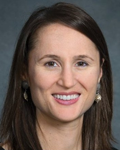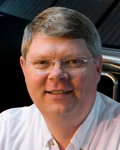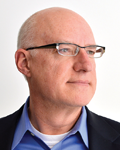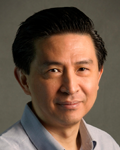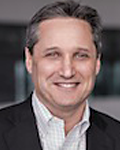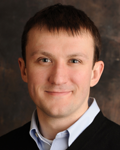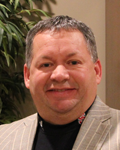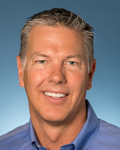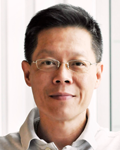Ryan Waite
Senior Vice President, Products
Cray, Inc.
 In late 2014 Cray announced that industry veteran Ryan Waite would be stepping over from Amazon Web Services to become Cray’s senior vice president of products. Waite brings with him more than 20 years of experience in big data, supercomputing and cloud, underscoring the impact that the convergence of big data and supercomputing is poised to have on the industry.
In late 2014 Cray announced that industry veteran Ryan Waite would be stepping over from Amazon Web Services to become Cray’s senior vice president of products. Waite brings with him more than 20 years of experience in big data, supercomputing and cloud, underscoring the impact that the convergence of big data and supercomputing is poised to have on the industry.
In his previous position as Amazon Web Services director of data services, Waite oversaw product management, engineering and operations. He also directed the Amazon Kinesis, AWS Fraud Detection, AWS Data Warehouse, AWS Metering and Tag Metadata teams.
Before joining Amazon, Waite built a 20-year career at Microsoft where he held a number of software design and management positions, and accrued a number of technology patents.
“As we look to develop integrated products that offer a unique value proposition for our customers, Ryan’s experiences in cloud, analytics, high performance computing and software will help us transform our innovative technologies into industry-leading solutions for a broader customer base,” says Peter Ungaro, president and CEO of Cray.
HPCwire: Hi Ryan. Congratulations on being selected as an HPCwire 2015 Person to Watch. We’ve followed your career, from Microsoft, then to Amazon, and now to Cray, a company which has a very rich tradition in high performance computing. Is there any particular insight or lesson that you’re bringing with you from your previous two work experiences with Amazon and Microsoft into your new role with Cray as Senior Vice President of Products?
Thank you. I’m really happy to have been selected by HPCwire. It’s quite an honor. At Amazon I was a big data practitioner, that is, I actually ran several big data services instead of just building big data technologies for other people. I learned what it meant to run big scale Hadoop clusters 24×7 and to run teams of data scientists building machine learning algorithms to identify patterns, like fraudulent use of cloud resources. Running a data warehouse showed me the intricacies of building big data pipelines to aggregate and report on data generated by hundreds of sources. It was a great experience. I hope that experience combined with my experience building for enterprise customers at Microsoft will benefit Cray.
HPCwire: Big Data and Cloud Computing are obviously big technology trends that Cray is very sensitive to. Are there any particular trends within these arenas that you see as important to take note of in 2015?
We’re early in the big data journey. Most customers I’ve met with are still figuring out how to collect and integrate big data into their existing infrastructure. When data is processed it’s done in simple ways: alerts, aggregations, simple transformations, etc. Collectively, as we evolve as a community, we’ll build more sophisticated computations on that data. Cray’s experience in parallel computing will be an advantage, especially because these big datasets will be difficult to partition across a distributed system. Cray’s Urika-GD graph discovery appliance demonstrates the kind of insight customers can get from big, difficult to partition data, like graph data, when you apply Cray’s supercomputing infrastructure.
I’m also excited about the evolution of programming languages. Languages like Python, R, Scala, and the new Julia language improve developer productivity while providing scientific or data science programming features. A lot of these developers don’t want to think about MPI communication patterns or the nuances of partitioning data for processing on a distributed system. They’ve got other work to do, like cleaning big, continuously generated datasets or building machine learning algorithms. There’s a big opportunity to help this community as their datasets get bigger and more complex.
HPCwire: One of the challenges that HPC system vendors like Cray have are to broaden their customer bases beyond the realms of the “traditional HPC” segments where government and academia lie, and into commercial markets. What are some of the key challenges that you recognize in this endeavor and how do you hope to address them?
There are a couple challenges: 1) commercial customers think supercomputing is too complex or too sophisticated for their needs, and 2) customers think supercomputing means expensive.
On the first point, we need to work with our partners, like NERSC’s Data and Analytics Group, to production-ize their big data computing algorithms. We also need to keep pushing on industry standard data management and data movement across storage tiers as well as improving parallel application resiliency.
On the second point, we have customers that tell us their Cray systems are the most efficient systems in their data centers. They want to migrate more of their workloads to their supercomputer. We must become better at telling Cray’s high efficiency and high productivity computing is a story. With a Cray you get a system that runs computations you can’t run on traditional enterprise hardware and it’s more efficient than existing solutions.
HPCwire: On a more intimate level, what can you tell us about yourself – personal life, family, background, hobbies?
Engineering, like life, is a collaborative endeavor. I think our best ideas come from polite but vigorous debate. If we can build safe, trusting environments then it frees us to have deeper debates and increase the likelihood we’ll make the right decision. For this “culture of debate” to work we need diversity in our opinions. One way to encourage diversity in our engineering is to have everyone in the team working intimately with different customers. Each of us sees a different need or a different requirement. When we come together to engineer solutions we have a better chance of getting it right.
On a more personal note I’m married to an inspirational woman named Shanna. She’s trained as a biologist, is a professional actress, and is a former coach for the US Ski Team. Together we push each other to achieve more than we thought was possible as individuals. We also just got an Irish Wolfhound puppy who is as loving and sweet as he is a character.
HPCwire: One last question – What can you share about yourself that you can share that you think your colleagues would be surprised to learn?
I’m a big supporter of the arts. I co-founded with my wife a new, 10,000 square foot center for the performing arts called The Studios located in downtown Seattle. We provide training in theater, music, and dance for everyone from absolute beginners to advanced professionals. We also do it at street level so the public can see that 80-90% of the performing arts is training and pushing yourself to continuously raise the bar. The performing arts are like any successful business endeavor: you must keep training and you must keep pushing yourself to be your best. It’s the same at Cray; we must keep pushing ourselves to understand our customers and build products that support their amazing endeavors.
